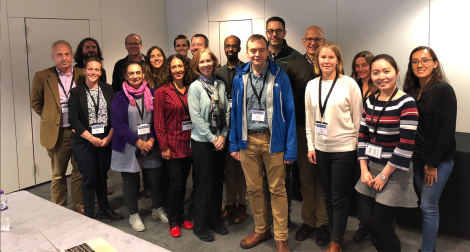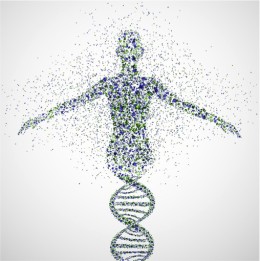by Cynthia M. Bulik PhD
This is the fourth in a series of blog posts about recent results from the Anorexia Nervosa Genetics Initiative study published in Nature Genetics. Part 1 details our results, Part 2 the process, and Part 3 is an interview with Dr. Patrick Sullivan about the future of eating disorders genetics research.
Recently Dr. June Alexander asked me in an interview how I felt when we started ANGI and how I am feeling about the results today. I responded that six years ago, when we started ANGI, I was both daunted and determined. Some people doubted we could obtain blood samples from 13,000 individuals with anorexia nervosa, but to be honest I never doubted that we would. My certainty came from working in this field since 1982! Having worked with people with anorexia nervosa and their families on three continents and across 4 decades, I had a pretty solid sense of how desperate they were for answers and how unsatisfied they were with our current understanding of and treatment of this devastating illness. In addition, I also knew in my heart that the compassion I had seen in so many patients (often before they could recognize it in themselves) would drive their willingness to participate and give back in the hope that others would not have to ensure the suffering that they had. My intuition proved to be correct. I think in our next stages when we expand our sample size and open up recruitment to bulimia nervosa and binge-eating disorder things will go even better because we no longer need blood samples! Technology has advanced in the past six years such that a simple saliva sample will allow us to do the same analyses that we needed blood for in ANGI.

A new explanatory framework. Our results and our conclusion that anorexia nervosa may best be conceptualized as a metabo-psychiatric illness are meaningful to patients and families in that they provide a new explanatory framework for understanding the illness. From my earliest days in this field, the purely sociocultural explanations for anorexia nervosa just never rang true. Sure, dieting to achieve a thin ideal might start the process in some cases, but it sure didn’t explain why if we were all exposed to that thin ideal, why we didn’t all develop anorexia. Nor did it explain why individuals with anorexia nervosa lost weight far beyond any societal ideal that might show up on the cover of a glossy magazine. Something was missing. So often parents would describe these incredible transformations in their children that marked their descent into anorexia and their relief during recovery when they could see glimmers of their pre-illness child again. Patients described wanting to eat and wanting to be well, but not being able to push through an impenetrable barrier that would allow them to eat and gain weight. I guess you could say that my career has been a quest to find an explanation that actually fit and accurately accounted for the most perplexing aspects of anorexia nervosa.
Some of the most perplexing aspects are: How do people with this illness actually reach and maintain such low weights? Why is negative energy balance (expending more calories than one consumes) reinforcing for them? Why do their bodies drop weight so quickly even after medically-supervised renourishment? Why does physical activity seem to be more reinforcing than food? Why do they go through a hypermetabolic period during renourishment in which they burn through calories in ways that our equations simply cannot predict? So many unanswered questions. In retrospect, it is crystal clear that all speak directly to a metabolic component to the illness.

The importance of renourishment. Our results do not yet tell us the nature of the metabolic component, in fact, that is an important follow-on topic to be researched. But they do offer some important suggestions about treatment. For example, many of our interventions focus on the importance of restoring and maintaining a healthy weight as a cornerstone of recovery. Family-based treatment (FBT), specialist supportive clinical management (SSCM), cognitive-behavioral therapy-enhanced (CBT-E), and clinical guidelines all focus on the importance of weight restoration and normalization of eating. Yet for one reason or another, many treatments might stop short of these goals—partial weight restoration and partial normalization of eating. Although this is speculative, our results raise the question of whether these partial attempts may inevitably lead to treatment failure or relapse because they do not give the metabolism an opportunity to equilibrate or reset. If a patient is prematurely discharged from an inpatient renourishment program due to insurance coverage, chances are good that they will end up back on the unit at a low weight in the near future, ultimately costing more money and creating more distress for both patient and family.
Avoiding negative energy balance. Similarly, I have always warned patients and families to avoid negative energy balance even after long-term recovery. This recommendation was always just based on clinical observation. Too many times I had seen someone go through a stressful period when they skipped meals, or overseas travel disrupted their eating schedule leading to a full-blown relapse (even after years of recovery). Now, perhaps the explanation lies in our results. Maybe negative energy balance is the switch that engages whatever metabolic process it is that begins the descent into anorexia nervosa. If anything, I feel more confident in that recommendation now given our findings. Basically, anorexia nervosa becomes part of your health legacy. That does not mean that you cannot recover, but it does mean that you need to be vigilant. I draw an analogy to my own back injury. Three bones in my back were broken in 1978 when some drunken fans picked me up and passed me up in the stands at a Notre Dame football game…then dropped me. Those bones healed completely, but I have had to do back-strengthening exercises every day since and be mindful of positions or activities that could place me at risk for a back relapse. The thrill seeker in me would have loved to try bungy jumping, but the risk was too high. That event is part of my health legacy that I need to respect. Likewise, if you had anorexia nervosa, you need to be vigilant for and avoid negative energy balance, because the risk is just too high.

What about genetic risk? Another question that our work raises in people who have had anorexia nervosa is what this means for their next generation. The most important thing to remember is that genetics is not destiny! Anorexia nervosa is a classic complex trait, influenced by hundreds if not thousands of genes of small to moderate effect as well as environmental factors. In fact, you can look at your (and your offspring’s) risk as a combination of four factors: genetic risk factors, genetic buffering factors, environmental risk factors, and environmental buffering factors. To increase complexity even more, you can throw in epigenetic factors. In the past, we were limited in being able only to identify environmental risk and buffering factors. Now we can add to that mix the ability to at least quantify genetic risk (and our confidence in doing that will increase with increasing sample size). We still do not have a handle on genetic buffering factors. It is entirely possible that someone with high genetic risk for anorexia nervosa never develops the illness—due to the presence of genetic and/or environmental buffering factors. Likewise, someone with low genetic risk for anorexia nervosa could develop the illness in the presence of overwhelmingly risky environmental factors. So, neither genetics nor environment is destiny. Parents with histories of eating disorders who are struggling to figure out what the appropriate level of vigilance is as they watch their children traverse the ages of risk for eating disorders are encouraged to visit a genetic counselor. In the past genetic counselors focused primarily on diseases like Huntington’s where the probabilities of transmission were clear. They are now skilled in dealing with more complex diseases like anorexia nervosa and can aid families in understanding and apprising risk. In general, we encourage parents to aim for a gentle balance between being hypervigilant versus blind to emerging signs of an eating disorder. If you are concerned about your child, the best option is to schedule an evaluation and speak with your provider about your concerns and how best to address them. This is an active area of research in the field and we hope to provide additional tools and guidance for parents in the near future.
Once again, we are grateful for all patients, family members, clinicians, advocates, and researchers who participated in ANGI. This has been a remarkable journey and we look forward to teaming up with you again when we roll out our next study, the Eating Disorders Genetics Initiative (EDGI). Stay tuned!


